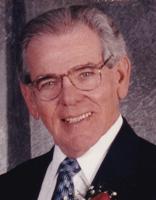Pennsylvania’s production of newly certified teachers plummeted for over a decade, but the latest data from the state Department of Education swung into the positive.
New certifications grew by 1,414 from 2021-22 to 2022-23, a 27.7% increase that Penn State education professor Ed Fuller found to be the second largest since data was first reported in 2010-11, according to his new research brief.
But as strong as the one-year jump proved it’s matched almost equally by a 27.2% rise in emergency certifications – permits for college-educated workers who don’t have an education degree or are certified in a different subject area than what they were hired for.
There were 8,595 emergency permits issued in 2022-23 to fill vacant positions or hire long-term substitute teachers or classroom monitors, up from 6,756 in 2021-22. By comparison, 6,515 new teacher certifications were issued in 2022-23.
Pennsylvania issued more emergency teaching permits than certifications to new teachers for two years running. Fuller said sustained increases across three to five years are needed to cement foundational change in the teacher pipeline.
According to the Shapiro administration, Pennsylvania currently has approximately 5,500 teacher vacancies.
“Even if we see increases, it’s going to take a while to get the shortages down substantially,” Fuller said. “From a state perspective, you want an oversupply. Then, districts can be picky and can pick the person who really fits the opening. Currently, a lot of places are taking whoever applies.”
Pennsylvania was long known for having an oversupply of teachers. In 2010-11, there were 17,111 new certifications issued. The count dropped to 14,899 the following year but again rose to 18,957 in 2012-13. Then, an almost yearly series of decreases followed, bottoming out to 5,101 in 2021-22.
Meanwhile, the issuance of emergency permits grew for nine consecutive years.
Schools in areas with low-income or higher populations of students of color are far more likely to hire teachers on emergency permits, Fuller’s analysis found, limiting access for these students to well-qualified teachers.
The increases in new teacher certifications aren’t equal across the board. Certifications for pre-kindergarten and elementary school jumped 40%. Fuller said that may be just enough to eliminate shortages in that area.
No other certification, however, approached that growth. Special education, a position proving to be among the most difficult to fill, followed in second but the growth of 262 new certificates wouldn’t approach what’s needed to fill existing vacancies, Fuller said.
The remaining certifications grew by double digits, not triple digits, and sustained growth in math, science, social studies and English is necessary to fill vacancies in core subject areas, Fuller’s analysis shows.
“We are trending in the right direction. We still have a long way to go,” said Chris Lilienthal, spokesperson for the Pennsylvania State Education Association. “We know there is still higher demand for teachers at the elementary and high school levels than there are folks coming down the pipeline.”
Nathan Benefield, senior vice president of the Commonwealth Foundation think tank, said what’s often missed in talks about teacher shortages is Pennsylvania’s declining student population.
Nearly 59,000 fewer students enrolled from 2013-14 through 2022-23, with the state’s total public school population including charters and technical schools dipping to 1,740,761.
Commonwealth Foundation analysis found overall enrollment fell by 139,000 students from 1999-00 through 2022-23. In that same time frame, public schools added 21,145 employees including more than 7,500 classroom teachers.
Benefield added the quit rate among teachers, which reached 7.7% in 2022-23, falls far below the rate of 25.6% across all jobs, according to data from the Bureau of Labor Statistics.
Benefield said he thinks there’s a teacher shortage but rather than statewide or nationwide, he said it’s concentrated in pockets and, like Fuller’s research shows, is exacerbated within certain school subject areas.
“A lot of this education fight is about spending more. If students are leaving, should you continue to operate empty schools? In districts losing population, do you need to hire more teachers when you’re losing students?” Benefield asked.
Fuller’s research, though, finds that teacher certifications issued per 1,000 students – 10.8 in 2012-13 compared to 3.7 in 2022-23 – is in decline at a rate faster than the drop in student population.
Spending on public education grew significantly under former Gov. Tom Wolf, and measures were taken post-pandemic to institute and, in time, extend policy to ease the hiring of substitutes.
Public school spending growth continues under Gov. Josh Shapiro, who also seeks growth and reform toward improving higher education in the commonwealth. With the state Legislature in agreement, a new student-teacher stipend program was initiated and proved wildly popular with far more requests made than the initial $10 million available could cover.
PSEA hopes the upcoming state budget will grow the program to $75 million, according to Lilienthal. The stipends top out at $15,000 each – most are at $10,000 – and allow student teachers to cover their own costs of living during 12-week unpaid placements at public schools.
Aside from continued increases in education subsidies and further investment in school infrastructure improvement, Lilienthal said PSEA is also lobbying to raise the floor for minimum teacher salaries to $60,000.
According to the state Department of Education, the average salary for classroom teachers in 2023-24 is $76,717.88. Data from 2021-22 shared by the National Education Association showed Pennsylvania ranked 11th in average pay.



























Commented
Sorry, there are no recent results for popular commented articles.